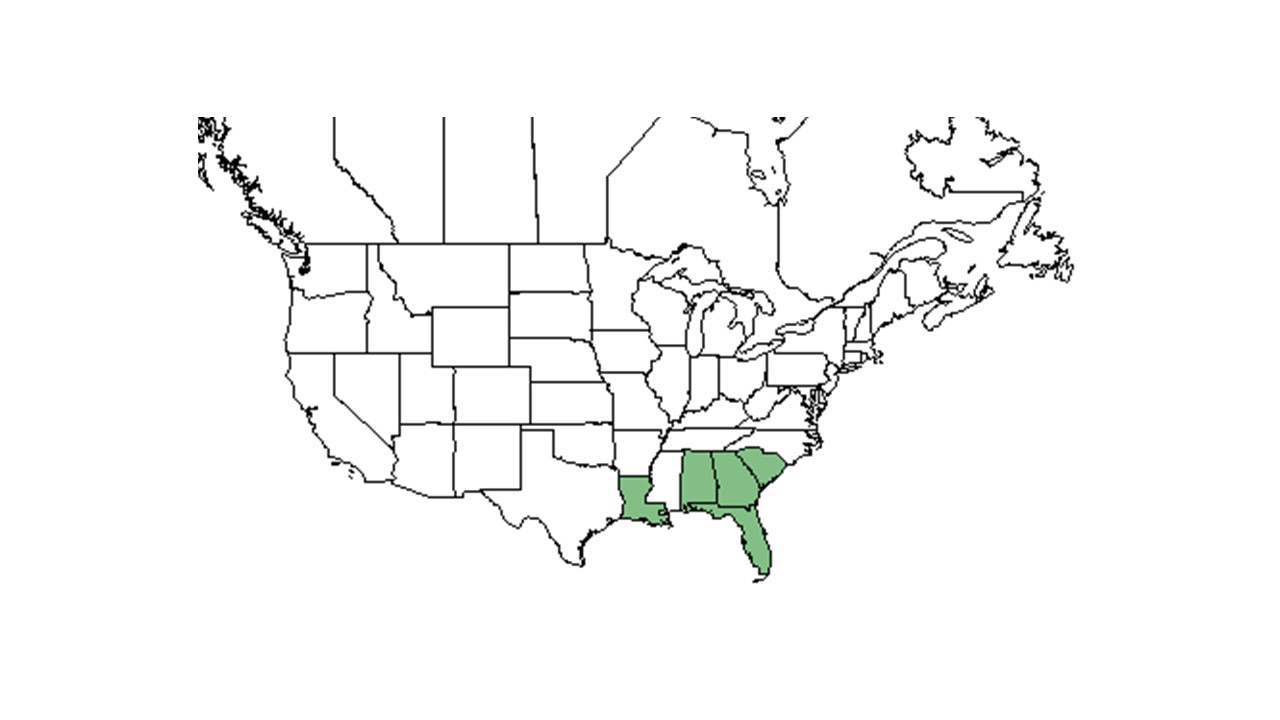Difference between revisions of "Dyschoriste oblongifolia"
(→Description) |
|||
| Line 20: | Line 20: | ||
<!-- Basic life history facts such as annual/perrenial, monoecious/dioecious, root morphology, seed type, etc. --> | <!-- Basic life history facts such as annual/perrenial, monoecious/dioecious, root morphology, seed type, etc. --> | ||
See [http://plants.usda.gov/core/profile?symbol=DYOB NRCS Plants Database] | See [http://plants.usda.gov/core/profile?symbol=DYOB NRCS Plants Database] | ||
| + | Common Name: oblongleaf snakeherb | ||
| + | |||
==Distribution== | ==Distribution== | ||
The Florida distribution is provided by the [http://florida.plantatlas.usf.edu/Plant.aspx?id=2603 Atlas of Florida Vascular Plants]. | The Florida distribution is provided by the [http://florida.plantatlas.usf.edu/Plant.aspx?id=2603 Atlas of Florida Vascular Plants]. | ||
Revision as of 17:54, 2 July 2015
| Dyschoriste oblongifolia | |
|---|---|

| |
| photo by Kevin Robertson | |
| Scientific classification | |
| Kingdom: | Plantae |
| Division: | Magnoliophyta - Flowering plants |
| Class: | Magnoliopsida - Dicotyledons |
| Order: | Scrophulariales |
| Family: | Acanthaceae |
| Genus: | Dyschoriste |
| Species: | D. oblongifolia |
| Binomial name | |
| Dyschoriste oblongifolia (Michx.) Kunz | |

| |
| Natural range of Dyschoriste oblongifolia. Image from USDA NRCS Plants Database. | |
Contents
Description
See NRCS Plants Database Common Name: oblongleaf snakeherb
Distribution
The Florida distribution is provided by the Atlas of Florida Vascular Plants.
Ecology
Indicator of longleaf pine woodlands; not found on pasture or cultivated lands.[1]
Habitat
D. oblongifolia appears to be restricted to soils with a sandy A horizon, whether in Entisols (sandhills) or Ultisols (clayhills) (KMR,[2]). Native undisturbed longleaf pine assosciate; found in burned and unburned areas.[3] Resides in upland and lowland areas old growth longleaf pine/wiregrass sandhill habitat.[4] A common forb in a fire-maintanied forest structure that is savanna-like with an open canopy of P. palustris.[5] It is found in pineland.[6] It is abundant in longleaf pine communities.[7] Resides in upland, midslope, and lowland areas old growth longleaf pine/wiregrass sandhill habitat.[4]. Dyschoriste oblongifolia is restricted to native groundcover with a statistical affinity in upland pinelands of South Georgia.[2]
Phenology
D. oblongifolia germinates and flowers within a few weeks following fire at a wide range of burn dates, at least from March to July (KMR). perennial[3]
Seed dispersal
By ants.[3]
Seed bank and germination
Fire ecology
It resprouts after fire.[7] It flowers within two months of burning in the spring.KMRExtremely vulnerable to disturbance.[8] Was observed to resprout one month after a fire in July of 1993.[9].
Pollination
Use by animals
Diseases and parasites
Conservation and management
Cultivation and restoration
References and notes
- ↑ Brudvig, L. A. and E. I. Damschen (2010). "Land-use history, historical connectivity, and land management interact to determine longleaf pine woodland understory richness and composition." Ecography 34: 257-266.
- ↑ 2.0 2.1 Ostertag, T.E. and K.M. Robertson. 2007. A comparison of native versus old-field vegetation in upland pinelands managed with frequent fire, South Georgia, USA. Tall Timbers Fire Ecology Conference Proceedings 23:109-120.
- ↑ 3.0 3.1 3.2 Creech, M. N., L. K. Kirkman, et al. (2012). "Alteration and Recovery of Slash Pile Burn Sites in the Restoration of a Fire-Maintained Ecosystem." Restoration Ecology 20(4): 505-516.
- ↑ 4.0 4.1 Gilliam, F. S., W. J. Platt, et al. (2006). "Natural disturbances and the physiognomy of pine savannas: A phenomenological model." Applied Vegetation Science 9: 83-96.
- ↑ Kirkman, L. K., M. B. Drew, et al. (1998). "Effects of experimental fire regimes on the population dynamics of Schwalbea americana L." Plant Ecology 137: 115-137.
- ↑ Wade, K. A. and E. S. Menges (1987). "Effects of fire on invasion and community structure of a southern Indiana cedar barrens." Indiana Academy of Science 96: 273-286.
- ↑ 7.0 7.1 Simkin, S. M., W. K. Michener, et al. (2001). "Plant response following soil disturbance in a longleaf pine ecosystem." Journal of the Torrey Botanical Society 128: 208-218.
- ↑ Kirkman, L. K., K. L. Coffey, et al. (2004). "Ground cover recovery patterns and life-history traits: implications for restoration obstacles and opportunities in a species-rich savanna." Journal of Ecology 92(3): 409-421.
- ↑ Pavon, M. L. (1995). Diversity and response of ground cover arthropod communities to different seasonal burns in longleaf pine forests. Tallahassee, Florida A&M University.